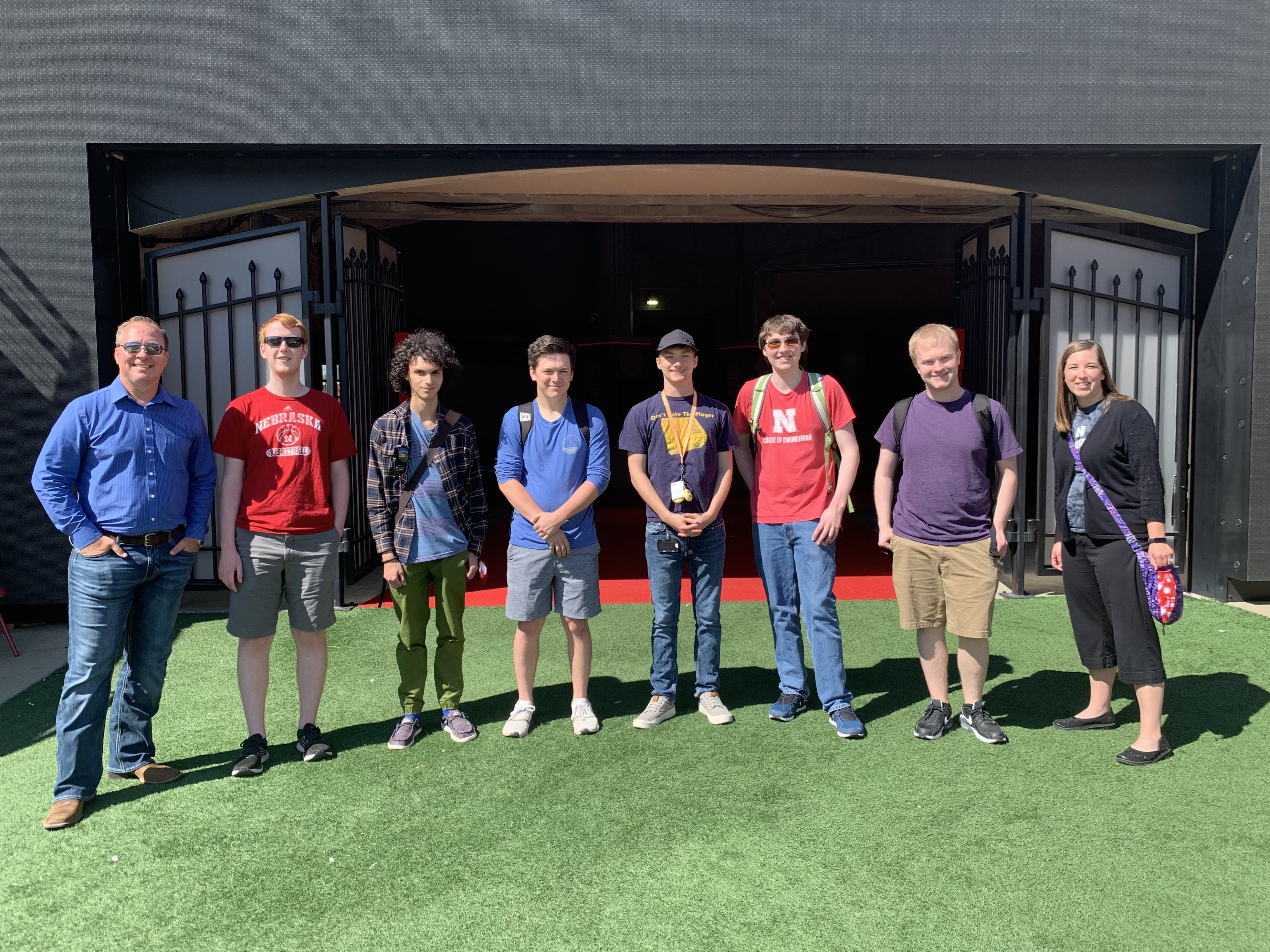Dec 21, 2021
By Victoria Grdina

Prospective University of Nebraska–Lincoln students will soon have the chance to explore Memorial Stadium and the School of Computing virtually as part of their recruitment experience, thanks to a team of Senior Design students.
Senior Design is a computing capstone course in which students spend a full academic year developing a real-world project. Students work closely with a faculty or industry sponsor to create a fully functioning product that meets specific technological goals of an organization.
The Husker STEM VR project was sponsored by School of Computing recruitment coordinator Brittney Palmer and lecturer Jeff Falkinburg, who wanted to develop a unique outreach tool for prospective students. Falkinburg suggested the idea after serving as a faculty advisor on several previous virtual reality projects and speaking with some of his students about ideas.
“We wanted to use VR to recruit a more diverse group of students who have an interest in STEM degrees,” Falkinburg said. “We thought, ‘What better way to make engineering fun in Nebraska than to incorporate Husker football and Memorial Stadium into the project?’”
The VR application would allow prospective School of Computing students to explore majors, research, and engineering principles prior to enrollment in a fun and fitting digital setting. It would also encourage them to consider pursuing a STEM degree at Nebraska.
“Part of what we wanted to do with the application is to inform prospective students about what a computer scientist, software engineer, or computer engineer actually does,” Falkinburg said. “By developing the educational challenges, they are actually learning more about the degrees offered in the School of Computing.”
Palmer said the game will not only help students learn about their degree options, but also choose the right one for them.
“Sometimes students have difficulties deciphering the differences between our majors,” Palmer said. “We thought that a STEM game which clarifies the differences might be useful.”
The VR app, built for Oculus Quest, will include various virtual activities such as engineering scavenger hunts, flying drones around the field, escape room challenges, and of course, a chance to explore Memorial Stadium.
“We currently have the only existing, true, 3D model of the east side of the stadium in the world,” squad lead and project manager Parker Brown said. “This is the only one in the world you can walk through. That's the cool part. And it was all from scratch.”
Students began the project by taking an in-person tour of Memorial Stadium. They snapped photos of the field and memorabilia inside, and also took shots of the floors, walls, and grass to create realistic and accurate textures and details within the app.
“We sort of broke our teams up into two parts,” developer Jackson Herman said. “We had two on the modeling and texturing side, and the other four were working heavily on the logic parts.”
Most team members had minimal or no previous experience working with VR design and animation tools, such as Unity or Blender, and some had “never touched a VR headset” prior to beginning the project. Team members unanimously agreed this one has been not only a valuable learning experience, but a fun one.
“It’s all brand new for most of us,” Herman said. “I’ve learned a heck of a lot about how to use Blender and 3D modeling techniques, which is something I’ve always had a little interest in, but never actually gotten to do.”
Members with more experience, like Brown, have been leading the team and aiding in the learning process by using peer programming techniques to share skills with teammates.
“If there’s something I know that will be useful for the entire team, then I’ll teach them,” Brown said. “A few weeks ago we had an entire team session of just working on Blender, working on trash cans and props, and getting deeper and deeper into the Blender process.”
According to Falkinburg, that’s the real goal of the project and the Senior Design course.
“Senior Design is not necessarily for production of a widget,” Falkinburg said. “That’s a byproduct, but the primary goal is for everyone to learn.”
Students are already progressing quickly on the project, and the app is on track to be completed and available for download in the App Store this spring. Team members plan to use the spring semester—and their winter break—to perfect the app to their liking.
“Our plan was to make sure that everything we designed this release would be recyclable for all future releases. It would be the foundation,” Brown said. “Now I am overhauling that environment over winter break and making it look super pretty.”